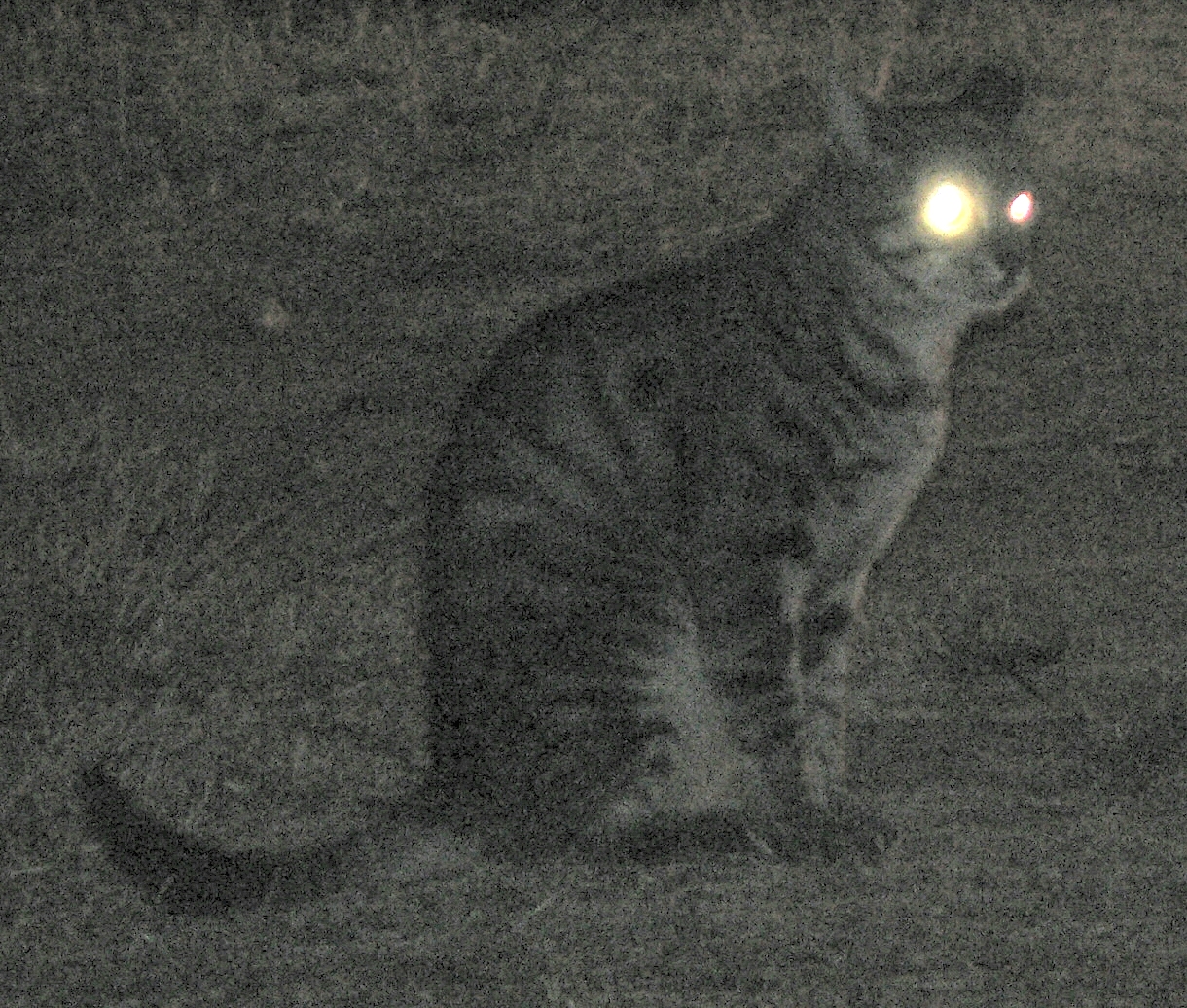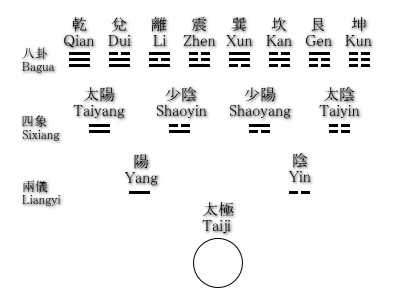Regular passive resonance.
P: So how are active sensors related to active resonances? And how is active resonance different from regular resonance?
M: Let us take a look at resonances first. Regular resonance is sympathetic vibrations of two objects. One vibrating tuning fork placed near another tuning fork will make that fork vibrate and produce a same pitch tone. That is regular resonance. Most musical instruments depend on regular resonance to make sounds. Active resonance differs from regular resonance in that the active one has its own energy supply while the passive one hasn't. Also, an active resonant object produces a transformed vibration pattern, not a copy pattern like the regular resonator. Powered microphone is an active resonator and sensor. It resonates to sound waves and produces electric waves. Cybernetically speaking, active resonance is one of the activities in the brain circuits. The other activities are feedback and adaptation. Together with equivalence, these physical brain activities can be mapped to memory and other non-physical phenomena of the mind!
P: Hmm, that is a bold claim. We will see how you will explain that. Where do you get these information?

Radar operation, uploaded by Averse from de.wikipedia.
M: From the history of technology. I was fascinated by war and technology. Before WWII, the Allies and Axis powers both needed sensors other than people to detect and track the movement of enemy aircraft. And radar (radio detection and ranging) was invented to do that. Radars proved to be such a success during WWII that resources were poured in for more research. From radars came radical advances in the understanding of negative feedbacks, also known as stability control and cybernetics. From negative feedbacks came the understanding how the brain acted as the stability governor of body metabolism and movement. Then robotic technology followed and grew like weeds. However, despite advances in robotics and computers, scientists still can not figure out how the brain works internally. The missing pieces are how or what information is circulating in the brain in regards to language and memory and dream and all the psyche stuff. We only know that electrochemical impulses are moving from neurons to neurons, and neurochemicals affect the impulse propagation.

P: I hear that there is a big national project going on called the Human Connectome. It is to map out the complete wiring diagram of neuron cells in the brain. Anyway, where is the resonance part in your sensor diagram? It shows only that a sensor is a comparator that outputs the difference between a feedback input and a threshold reference.
Cross section of a human eye, showing a detached retina at top.
by Erin Silversmith.
M: Let me use the eye as an example of an active sensor. The retina of the eye is lined with dense optical nerve endings called photoreceptors that connect directly to brain cells. Resonance? These nerve endings will fire up neural impulses as a resonant response to color variations, brightness contrasts, and location movements. It is an active resonance powered by nutrients in the blood. The neural impulse firings are a transformation of the optical information, not a copy. And the direction of resonance goes only from optical to neural, not other way around. The eyes do not emit bright light from the neural impulse firings of the brain, even though some pictures of animals might seem to suggest that.

Kattenretinatapijtweerkaatsing, Cat's retina reflection
The light seen at the eyes of animals at night are really only reflections at the retina. 'Bright-eyed' does not mean the retina is shining from within, just that a person is alert or eager. However, the sense organs are mood organs. We instinctively gauge someone’s mood by the look of his eyes or the tone of voice. Not only that, it can also be the flushed face, pricked ears, crinkled nose, etc. Body language is not a transformation from neural impulse firings to light or sound or smell, but to movements of muscles and body fluids.
Eyes, ears, nose, tongue, and skin are all sensors of active resonances. They produce waves of neural impulse firings to the vibrations of auditory, olfactory, gustatory, and tactile differences. In other words, they resonate to formations from the outside world, transform them into other formations, and transmit that to the brain. They are like antennas along the looping pathways of information. And information is in-formation, or that which is inside a formation. Formations like light vibrations or sound vibrations. Information is also en-formation, a formation that can trigger another formation. The word root 'en-' means to make, to cause, as in en-able and en-act.
P: Okay, enough of word roots. I see the difference output of the sensor in the diagram corresponds to your resonance. What about the threshold reference, why the difference of the input and the threshold?
M: Difference is the basis of information. Optical waves and appearances are themselves patterns of repeating differences. And these differences are further separated by a blocking threshold in a sensor. The threshold of our eyesight is partly set by the pupil. It dilates or contracts to adjust how much light can get onto the retina. The different amount of light that gets in is transformed to neural impulses at the retina. Then, on the pathways towards the brain, the opto-neural impulses are subject to another threshold adjustment. The brain has neurons that loop back and synaptically connect to these pathway nerves. The synapses get inhibitory or excitatory feedback impulses from the brain, which dampen or strengthen the transmission of optical information from the eyes to the brain. The thresholds are there to enable sensory adaptations to environmental changes.
When you walk from a dark movie theater out into a sunny place, you get too much light too quickly and cannot see well. But with the help of inhibitory impulses along the optical nerves, the intensity of optical information is reduced quickly and we regain the ability to see well. Similarly, changing from a bright to a dark place, we are blinded temporarily by too high an inhibitory impulse threshold set previously. Then, the brain lowers the inhibitory threshold, and we can see well in the dark place again. It is basically a negative feedback mechanism that regulates stable visual information flow, correcting either over or under transmission.

Fish market Jagalchi Busan.
The same kind of sensory threshold adjustment takes place in hearing, smelling, tasting, and feeling also. People who visit a fish market are at first overwhelmed by the fishy smells, but soon got over it. Those who love spicy Thai foods were at first stung by the powerful peppers. Gradually their taste buds acclimate to and build up tolerance for that. In the hi-fi world, there are audiophiles who spend thousands of dollars or more on loudspeakers. They believe that the speakers will sound better after a break-in period. Many hear a difference before and after, and swear that it is due to the mechanical break-in of the speaker components. But in fact it is the brain-ears thresholds that get fine-tuned and adapted to the speaker’s sound.
If you take the sensor diagram and relabel it as a governor diagram, it still sort of fits. Input, threshold, and resonant difference output are also part of the governor circuitry. Although what constitutes threshold and resonance in the brain will have something to do with memories, or learning, as they are closely related. We will get to that when we examine the brain circuitry. How the brain sorts out attractive differences and repulsive differences is more by learning than by genes. Suffice it to say here that mental threshold is sometimes known as bias or prejudice or preference. It blocks off certain information from reaching the governor, the logic, part of the brain. Tell a story and ask people to repeat it and see what happens. They will come up with versions that differ from one another as they have different biases. The Internet viral story of 'what color is this dress?' is an example.
Youtube, 41K+ comments
We all have our biases but we don’t like other people having them. We call theirs narrow-mindedness or tunnel-vision. And we call ours common sense or self-evident truth. Scientists have another name for bias. They call it presumption. And smart is the one who notices his own biases as presumptions. What may be a presumption? ‘What is heard is what is said’ is a presumption.
P: God knows how some people don’t listen. I myself sometime cannot hear the intention behind what other people are saying, or miss parts of what they actually say. Okay, I get what you mean by threshold. Anyway, music reminds me of dancing. People dance to music. Is that an example of active resonance?
M: Sure, dancing is a good example. And singing too. Active resonance is like imitation. The body moves to imitate the beats. The voice rises and falls to imitate the melody. Some are afraid to dance or sing because they feel awkward. Maybe it is because some mental threshold is blocking the urge to imitate? Little kids sure like to dance and sing without such inhibition.
Active resonances. Instrumentals start at 11:20
There is a band called the Grateful Dead. They play rock-n-roll music in a way that resembles jazz improvisation. When playing the instrumentals together, these guys listen to what the others are doing and groove with that. Each time they play a song it comes out very differently as it is a group dynamics. They show what feedbacks of active resonances are like.
P: I know this band. They are a famous hippies band during the 60s and 70s. Are we talking about 'expanded consciousness' or drugs here, the 'Summer of Love'?
M: We are talking about music and resonances here. Music and expanded consciousness do go well together. And speaking of hippies, some of them did do drugs, but some of them also studied psychology and spirituality, especially the Eastern philosophies such as Buddhism and Hinduism. Buddhism in particular talked about the sense organs and the mind.
Many Buddhists memorize the Heart Sutra (般若波羅蜜多心經). Here is an excerpt of that: “... No eyes, ears, nose, tongue, body, intention. No sight, sound, smell, taste, touch, dharma...” (original Chinese text: 無眼耳鼻舌身意, 無色聲香味觸法) There are two things of interest here. One is the word ‘no’ (無) and the other is the correspondence of sense organs and sensations. ‘No’ (無) and ‘emptiness’ (空) are two words used often in Buddhist sutras. Their meanings are puzzling yet mesmerizing to students of Buddhism. It is fascinating to hear how Buddhist masters and religious teachers past and present explain the phrase ‘no eyes, ears, nose…’. These sense organs and sensations clearly exist but the text says otherwise. The masters may not explain it but tell the students to meditate on it. Either way, nobody has gotten very far in making the text sensible whenever they try to communicate about it.
The five organs eyes, ears, nose, tongue, skin give us five kinds of sensations - sight, sound, smell, taste, and touch. That is obvious. But there is a sixth correspondence in the text: intention (意) and dharma (法). This is the interesting part. Dharma was taught by the Buddha and recorded in the sutras. Did the Buddha classify ‘intention’ as an organ and ‘dharma’ a sensation as the context suggested? Or was it just an inadvertent use of composition for the sake of including ‘dharma’ in it? Anyway. dharma = 法 (law) is a clever phonetic translation from Sanskrit to Chinese. Just as 'samadhi' translated to '定' (steadfast, stillness) is a clever phonetic play of language. But this cleverness actually mislead students away from the original meaning, which the Buddha said in the Lotus Sutra that only another Buddha could understand it. Well, when we build up a language for the mind we will see about that. From 500 B.C., around when the Buddha was born, to the middle of 20th century there was no such language. So it is no wonder that the dharma was hard to understand, and the Zen school had abandoned language and used meditation instead as a means to reach enlightenment.
P: Okay, this is getting exciting. Are you ready to build up a language of the mind, or memory, as we originally discussed?
M: Yes, just one last thing and we will get to it. We already have a few vocabularies for it - Feedback, Adaptation, Resonance, and Equivalence, F.A.R.E. You can spell it F.E.A.R. or R.E.A.F., however you like. But I want to mention a Zen Koan (禪 公案, zen story) first before I forget.
Zen. Which is moving? At 7:30
It is a story about the Zen master Huineng, told in the Sixth Patriarch Platform Sutra (六祖壇經). A flag is flapping in the wind. One person says, look, the flag is moving. Another person says, no, it is the wind that is moving. The sixth patriarch Huineng, before his identity is known, says it is not the flag nor the wind moving, but it is the heart (mind) moving. One Buddhist audience is taken aback and realizes he is a master.
In my language of resonance, it is the flag resonating to the movement of the wind. The eyes resonate to the sight of the flag movement, The brain resonates to the impulse firings of the eyes. The talking mouth resonates to the neural impulse waves of the brain. It is a circus of resonances.
P: Ha, a circus! Okay, let us talk about the brain now, shall we?






